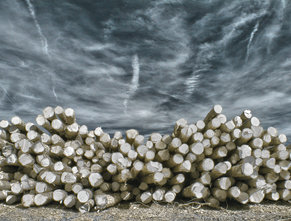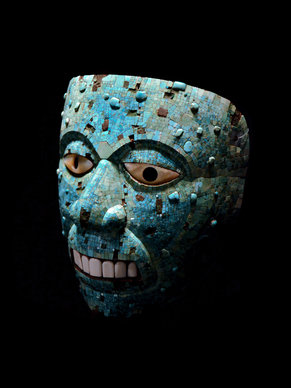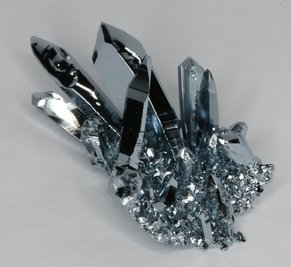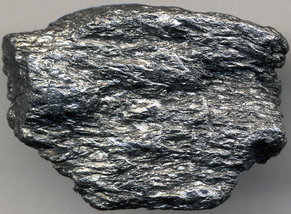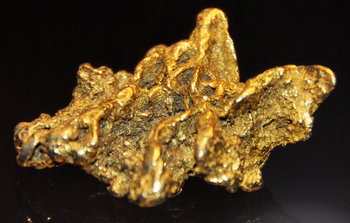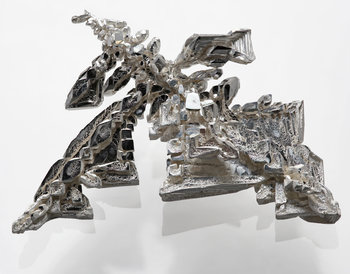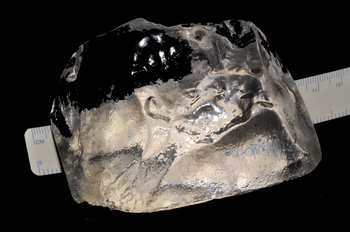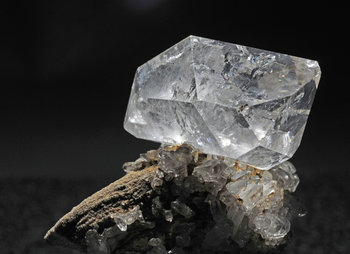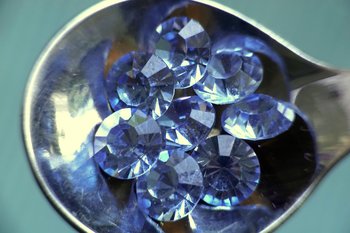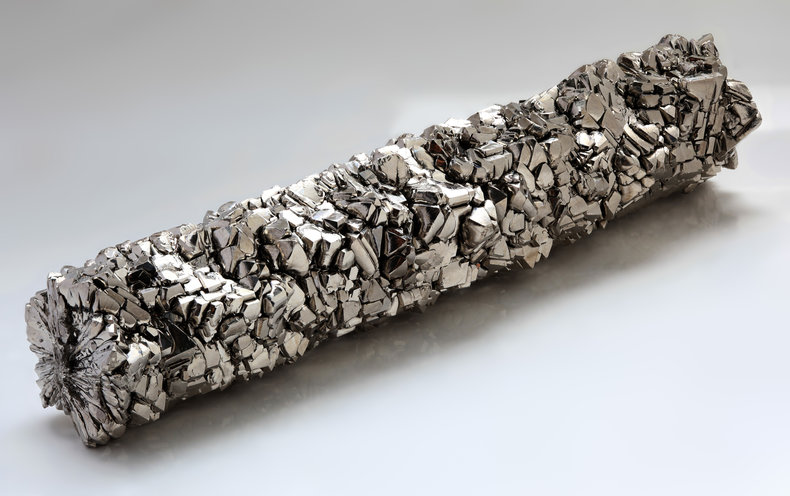
Iron
Iron is specifically excluded from some definitions of base metal while is is specifically included in others. Generally speaking, the mining industry doesn't view iron as a base metal. This is due to the fact that production of iron is far greater than the other metals such that it deserves its own category. However, iron is often included as a base metal outside the mining industry. For example, customs agencies may view iron as a base metal.Copper
Copper is a useful metal that is malleable and ductile with very high thermal and electrical conductivity. It is unusual as it can be found in deposits in its native form. As such, copper was one of the first known metals that was used as early as 8000 BC. Copper forms a characteristic blue-green patina when it oxidizes. This adheres to the surface of the metal and protects the metal from further oxidation. As such, copper is extremely durable in moist air.Nickel
A silver colored lustrous metal that was often used accidentally in antiquity as it was mistaken for silver or included as an impurity in other metals. The Chinese may have produced nickel as early as 1400 BC but thought of it as "white copper." Nickel was isolated as a unique metal and named in 1751. It was produced at scale by 1848.Zinc
Zinc is the 24th most abundant element in the Earth's crust. It was well known to the ancient world and was produced at some scale in India by the 13th century. Nevertheless, German scientist Andreas Marggraf is credited with "discovering" zinc in 1746. This type of bias is common whereby a well known substance isn't considered discovered until a Western scientist documents it. Zinc has a large number of industrial uses and is the third most common metal by production level. It is mostly used in the galvanization of iron and as an alloy with other metals.Lead
A heavy metal with a large number of industrial uses. Lead is an extremely toxic metal that is being phased out of many products. It is poisonous to every system in the body but it particularly known for its neurotoxic effects that can permanently harm the mental development of children with surprisingly low exposures.Aluminium
An abundant metal that makes up 8% of the Earth's crust. Valued for its low density and corrosion resistance.Tin
Tin is one of the seven metals of antiquity, the only metals that were known to the world before the 13th century. Often used in alloys such as bronze and pewter and as a corrosion resistant plating for steel.Tungsten
Tungsten is a rare metal that has the highest melting point and boiling point of all metals. It is used in a variety of high temperature and high strength applications often as an alloy or carbide.Molybdenum
A silver colored metal with high heat resistance that is often used in alloys and chemicals. For example, molybdenum is often added to structural and stainless steel.Tantalum
A rare metal that is highly corrosion-resistant. Used in a variety of electronics and alloys.Cobalt
A metal that was used as a blue pigment known as cobalt blue as early as the 8th century in Chinese porcelain. Cobalt is found in the human diet as Vitamin B12, also known as cobalamin. Nevertheless, cobalt is poisonous in anything above trace amounts. As an industrial metal it is found in lithium-ion batteries and superalloys. Cobalt is also used in a variety of chemicals.Chromium
Chromium is the main additive to stainless steel which gives the metal its anti-corrosive properties. It is a highly reflective, silver colored metal that is hard but brittle on its own.Cadmium
An extremely poisonous metal that is considered a health and environmental hazard. Cadmium is used in some varieties of solar panels that use cadmium telluride (CdTe) as a semiconductor. Cadmium is also used in nickel-cadmium batteries. It is historically used as a pigment and is still used in some paints today. The red color of rubies is due to trace amounts of cadmium.Titanium
Titanium has the highest strength-to-density ratio of any metallic element and is corrosion resist. It is used in light weight applications often as an alloy with other metals. Titanium dioxide is an extremely common white pigment used in a wide variety of products such as toothpaste and paint.Others
The following metals can also be considers base metals.Antimony | Beryllium |
Bismuth | Gallium |
Germanium | Hafnium |
Indium | Manganese |
Niobium | Rhenium |
Thallium | Vanadium |
Zirconium |
| Overview: Base Metals | ||
Type | ||
Definition | Common, relatively inexpensive and commercially relevant metals that are produced at scale. | |
Related Concepts | ||

